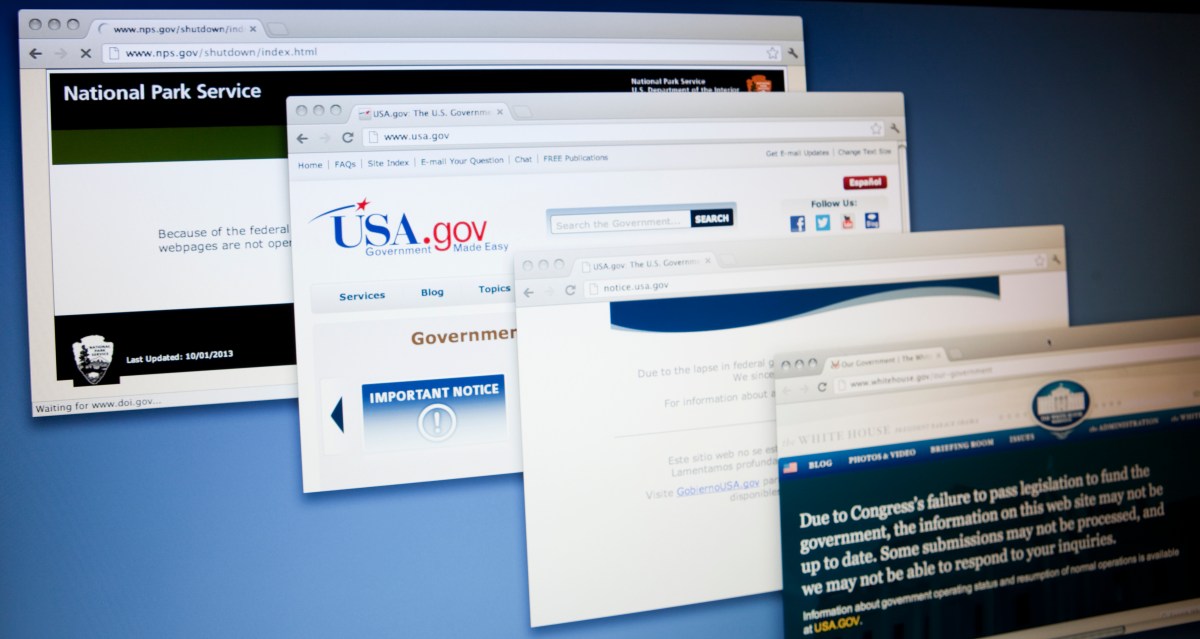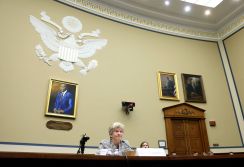Government websites aren’t created equal. GSA’s 10x program aims to change that

Over the course of his 14-plus years at the National Renewable Energy Laboratory, Nick Langle has learned a thing or two about the chasm that exists between the internet’s haves and have nots.
As a principal investigator for the Department of Energy-funded Community Power Accelerator, Langle spends his days researching web sustainability and human-computer interaction in the pursuit of expanding access to affordable solar energy. In that role, he’s confronted on an all-too-regular basis with what user experience professionals call the performance inequality gap.
“A lot of internet users are on older hardware, or maybe it’s newer but it’s a budget device,” Langle said. “And so those devices don’t have the same hardware capabilities as this super fancy laptop that maybe I’m programming on.”
The result of that technological imbalance is a public unable to consume information from the federal government in the same way — an imbalance that a team of Technology Transformation Services experts are working to address through the General Services Administration’s 10x program. 10x considers tech ideas from civil servants throughout the federal government and invests in a handful that it believes could be transformative for the delivery of public services
Langle’s project idea — Accelerating Inclusive CX and Web Access — was one of 16 selections the 10x team announced in March that it would fund, beating out nearly 200 other technology proposals. The submission pointed specifically to “ongoing user performance issues” with “numerous government websites” that “disproportionately affect vulnerable users, especially those dependent on mobile data plans instead of WiFi.”
For those vulnerable users, accessing critical information on a government website that isn’t designed with inclusivity in mind can lead to “substantial consumption of their data plans,” the 10x site notes. “This results in tangible costs that underscore a lack of equal accessibility to government content for these users.”
Will Cahoe, communications and outreach lead for 10x, said Langle’s problem felt “solvable,” and the pitch’s emphasis on inclusivity immediately resonated with the TTS crew.
“It’s really at that intersection of digital and inclusivity, and that’s where we have a lot of expertise,” Cahoe said. With 10x, “we have the freedom, and really the mandate, as we see it, to look for broad solutions, things that can help a lot of people. And so the idea that there are certain geographies, there are certain income levels across the country that people are in that could affect their access to our websites, that feels really important.”
What began as Langle running his own audits and doing a brief analysis of various government sites in his spare time has since advanced to phase two of 10x, meaning it is one of only a few projects per year that the government’s in-house “venture studio” believes is potentially feasible to execute. Moving beyond phase 1 also means the project has cleared potential regulatory hurdles and does not have any obvious red flags.
The team is now exploring “an actionable and reusable design and development strategy” that matches W3C Web Sustainability guidelines — while also “exploring a performance tool tailored for users with poor or restricted internet access.” Phase 2 gives the developers, researchers and product managers time to zero in on the market landscape and identify any barriers that might prevent the project from succeeding.
There’s also the possibility of a pivot from the specific project to related work across the federal web space, Cahoe said, depending on what’s revealed in phase 2. “You tell people that, ‘hey, if we built a thing or a service, is this something that folks would use?’” he said.
That question and others could be revealed during the technical prototyping 10x is doing now, in addition to automated testing and field work that includes a closer examination of federal websites.
From Cahoe’s standpoint, there are plenty of reasons for optimism about Langle’s project moving forward, starting with the fact that it falls “under an umbrella of improving mission delivery at agencies through better digital customer experiences.” 10x has documented successes that fit that bill, with the U.S. Web Design System standing out as one of its most notable wins.
“It’s a suite of online, reusable tools for federal web managers that came out of 10x,” Cahoe said of USWDS. “It’s not terribly difficult to see how something like web performance tools could be incorporated into that.”
Whether it’s rural populations with spotty access to broadband or lower-income urban areas that don’t have 5G yet, plenty of Americans stand to benefit from the project should it make it across the finish line. Beyond the obvious geographic user-experience issues at play, Langle said it would help people with older devices, which aren’t equipped to handle an industry trend to use more JavaScript in web design.
In cases where users “run into some of these very JavaScript-intensive things” on certain websites, Langle said, “your fans start running on your computer because it’s consuming [a lot of energy]. Those budget devices or older hardware, they do not handle those types of applications the same as newer hardware does. … It really does throttle or bottleneck their experience.”
A byproduct of those performance gains, Langle said, will be a reduction in the energy demand required of older devices trying to keep up. On an individual level, those gains would be minimal. But in the aggregate, Langle said energy efficiency gains could be notable and the federal government’s carbon footprint could actually be reduced.
At this point in the project’s lifecycle, the end result is theoretical, given that two phases remain assuming it moves past the second stage. But while neither Cahoe nor Langle are in the business of making predictions, they’re both hopeful about the project’s prospects and its ultimate ability to incorporate inclusive design in all phases of government web design.
“There is no technical impossibility here,” Cahoe said. “So we know that it’s achievable. … It’s the impact we’re looking for. It fits with it and everything we want to do.”






